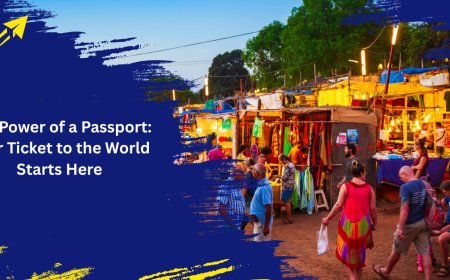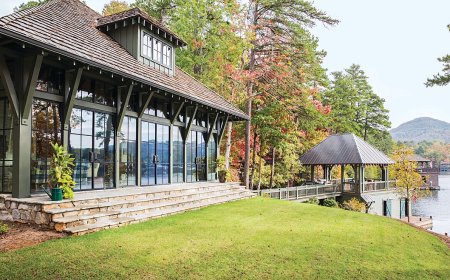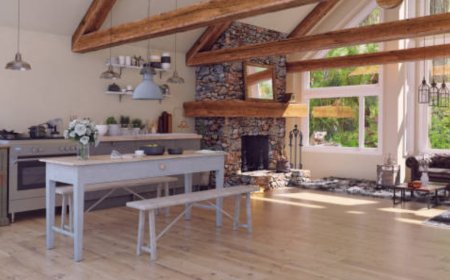How to Cycle Canal du Midi Spring Blossom
How to Cycle Canal du Midi Spring Blossom The Canal du Midi, a UNESCO World Heritage Site stretching 240 kilometers across southern France, is more than a historic waterway—it’s a living corridor of natural beauty, architectural elegance, and cultural heritage. Each spring, as the trees lining its banks burst into bloom, the canal transforms into a breathtaking ribbon of pink, white, and green, of
How to Cycle Canal du Midi Spring Blossom
The Canal du Midi, a UNESCO World Heritage Site stretching 240 kilometers across southern France, is more than a historic waterway—it’s a living corridor of natural beauty, architectural elegance, and cultural heritage. Each spring, as the trees lining its banks burst into bloom, the canal transforms into a breathtaking ribbon of pink, white, and green, offering cyclists one of the most immersive and serene experiences in Europe. Cycling the Canal du Midi during spring blossom season is not merely a physical journey; it’s a sensory pilgrimage through centuries of human ingenuity and seasonal renewal. This guide provides a comprehensive, step-by-step roadmap to help you plan, prepare, and fully enjoy this iconic cycling route during its most enchanting time of year.
Why focus on spring? Unlike summer’s crowds or autumn’s chill, spring offers mild temperatures, vibrant flora, and the quiet rhythm of nature awakening. The plane trees, willows, and flowering shrubs that shade the towpath are at their peak, creating a tunnel of blossoms that filters sunlight into dappled patterns on the road. The canal’s locks, bridges, and villages—many unchanged since the 17th century—take on a poetic charm when framed by blooming branches. For cyclists, this is the ideal window to combine physical activity with cultural immersion, photography, and quiet reflection.
Whether you’re a seasoned cyclist seeking a scenic challenge or a casual rider looking for a peaceful escape, cycling the Canal du Midi in spring requires thoughtful planning. This guide walks you through every phase—from selecting the right route and timing your trip to packing essentials, navigating local customs, and discovering hidden gems off the beaten path. By the end, you’ll have the knowledge to turn a simple bike ride into a deeply rewarding, unforgettable experience.
Step-by-Step Guide
Step 1: Choose Your Route and Duration
The Canal du Midi runs from Toulouse in the west to Sète on the Mediterranean coast. While the full route is 240 kilometers, most cyclists opt for a section that suits their fitness level and time constraints. For spring blossom viewing, we recommend focusing on the central stretch between Castelnaudary and Beziers, approximately 110 kilometers. This segment offers the densest concentration of mature plane trees, the most picturesque locks, and the highest density of flowering hedges and orchards.
Break your journey into manageable daily segments. A comfortable pace is 25–35 kilometers per day, allowing time to stop, explore, and photograph. A five-day itinerary might look like this:
- Day 1: Castelnaudary to Carcassonne (32 km)
- Day 2: Carcassonne to Narbonne (28 km)
- Day 3: Narbonne to Béziers (27 km)
- Day 4: Béziers to Portiragnes (18 km) — optional rest day with side trip to the Orb River
- Day 5: Portiragnes to Sète (15 km) — finish with Mediterranean views
If you prefer a shorter trip, start in Carcassonne and ride to Narbonne (28 km), a perfect two-day outing. The path is flat, well-maintained, and shaded—ideal for spring conditions.
Step 2: Determine the Best Time to Visit
Spring blossom season on the Canal du Midi typically peaks between mid-March and mid-April, depending on weather patterns. In warmer years, blossoms may appear as early as late February; in cooler springs, they may linger into early May. To maximize your experience:
- Aim for the third week of March to the second week of April.
- Check local blossom forecasts from tourism offices in Toulouse or Carcassonne.
- Avoid public holidays like Easter Monday, when local traffic increases.
- Early mornings (7–10 AM) offer the softest light for photography and the fewest cyclists.
Spring weather in this region is generally mild, with daytime temperatures between 12°C and 20°C. Mornings can be cool, so layering is essential. Rain is possible but infrequent; pack a lightweight, packable rain jacket just in case.
Step 3: Select Your Bicycle and Gear
The towpath of the Canal du Midi is mostly paved or compacted gravel, making it suitable for hybrid bikes, gravel bikes, or even well-maintained road bikes with wider tires (28–35mm). Avoid heavy mountain bikes—they’re unnecessarily bulky for this terrain.
Essential gear includes:
- Hybrid or gravel bike with comfortable saddle and upright handlebars for long hours
- Two spare inner tubes and a mini pump or CO2 inflator
- Lock and cable for securing your bike at locks and cafés
- Water bottles or hydration pack (at least 1.5L capacity)
- Lightweight rain jacket and arm warmers
- Comfortable cycling shorts and moisture-wicking jerseys
- Helmet, sunglasses, and sunscreen—even on cloudy days, UV exposure is high near water
- Portable phone charger and offline maps (see Tools section)
- Small daypack for snacks, camera, and guidebook
Many travelers rent bikes locally. Reputable rental shops in Carcassonne, Narbonne, and Toulouse offer well-maintained hybrid bikes with panniers, GPS units, and even e-bike options. Booking in advance is strongly recommended during peak blossom season.
Step 4: Plan Your Accommodations
The Canal du Midi is lined with a variety of lodging options, from boutique hotels to family-run guesthouses and even converted lock-keeper cottages. For spring blossom cyclists, staying in villages directly on the towpath enhances the experience.
Recommended stops:
- Castelnaudary: Known for cassoulet, this town has several charming B&Bs with canal views.
- Carcassonne: Stay within the medieval citadel for a historic overnight, or choose a riverside hotel just outside for quieter surroundings.
- Narbonne: The Hôtel du Canal offers direct access to the towpath and a terrace overlooking blooming willows.
- Béziers: Look for accommodations near the Saint-Roch lock, where the canal meets the Orb River.
- Portiragnes: A quiet village with rustic guesthouses and excellent local wine.
Book at least 6–8 weeks in advance. Many properties fill quickly during spring. Consider staying in places that offer bike storage, breakfast with local produce, and luggage transfer services if you’re not carrying all your gear.
Step 5: Navigate the Route with Confidence
The Canal du Midi is exceptionally well-marked. Look for the distinctive blue-and-white signs featuring a boat and the words “Voie Verte du Canal du Midi.” The path is mostly flat and separated from road traffic, making it safe for all ages.
Use a GPS app like Komoot or RideWithGPS to download the official Canal du Midi route. These apps provide elevation profiles, points of interest, and real-time navigation. Offline maps are critical—cell service can be spotty between villages.
Key navigation tips:
- Follow the towpath on the left side of the canal when heading east (Toulouse to Sète).
- At each lock, dismount and walk your bike through—this is both a safety rule and a tradition.
- Watch for signs indicating “embarcadère” (boat landing) or “écluse” (lock). These are prime photo spots.
- Use the canal’s direction of flow to orient yourself: water moves from west to east, fed by the Montagne Noire.
Don’t rush through locks. Watch how the operators manually open and close the gates—it’s a living piece of engineering history. Many operators are happy to explain the process if you ask politely.
Step 6: Engage with Local Culture and Cuisine
The Canal du Midi is as much about people as it is about scenery. Spring is when locals emerge from winter, and village markets come alive.
Stop at weekly markets:
- Carcassonne (Saturday): Fresh goat cheese, olives, and lavender honey.
- Narbonne (Wednesday): Seafood from the Mediterranean, saucisson, and local rosé.
- Béziers (Sunday): Artisan breads, fig jam, and candied violets.
Sample regional specialties:
- Cassoulet (Castelnaudary): Slow-cooked white beans with duck, sausage, and pork.
- Confit de canard: Duck leg preserved in its own fat, served with roasted potatoes.
- Fougasse: A sweet or savory flatbread, often flavored with orange blossom in spring.
- Vin de Pays d’Oc: Light, fruity reds and crisp whites from the Languedoc region.
Many cafés along the route serve “café au lait” and croissants with a view. Don’t hesitate to linger—this is part of the journey.
Step 7: Capture the Blossoms and Memories
Spring blossom photography on the Canal du Midi is legendary. To capture the magic:
- Use a wide-angle lens to frame the tunnel of trees above the path.
- Shoot during golden hour—early morning or late afternoon—for warm, soft light.
- Include reflections in the canal water; the stillness of spring mornings creates perfect mirrors.
- Photograph cyclists in the distance—small figures under blooming canopies evoke scale and serenity.
- Don’t forget close-ups: petals on the path, dew on leaves, and the texture of ancient stone locks.
Bring a small tripod or use a beanbag to steady your camera on the towpath’s edge. Avoid using flash—natural light is best.
Best Practices
Respect the Environment
The Canal du Midi is a protected heritage site. Follow these environmental guidelines:
- Never litter—carry a small bag for trash and dispose of it in designated bins.
- Stay on the towpath. Walking or cycling on the banks damages root systems and disturbs wildlife.
- Do not pick flowers, even if they appear abundant. Many are protected species.
- Keep noise to a minimum. This is a tranquil corridor for birds, turtles, and otters.
Use biodegradable soap if washing up, and avoid using plastic water bottles. Many towns have refill stations.
Be Considerate of Other Users
The towpath is shared by walkers, joggers, families, and other cyclists. Practice courteous behavior:
- Ring your bell or say “Bonjour” before passing.
- Slow down near children, elderly walkers, and dog owners.
- Yield to pedestrians, especially at narrow bridges.
- Keep music off—headphones are discouraged for safety and respect.
Remember: you’re a guest in a living landscape. The canal’s beauty depends on collective care.
Plan for Weather Variability
Spring in southern France can be unpredictable. One day may be sunny and warm; the next, cool and damp. Pack accordingly:
- Layer clothing: moisture-wicking base, insulating mid-layer, windproof outer shell.
- Bring a lightweight, packable hat and gloves for chilly mornings.
- Use waterproof pannier covers to protect gear from unexpected rain.
- Check the 7-day forecast daily and adjust your route if storms are predicted.
Heat exhaustion is rare in spring, but dehydration can occur. Drink water regularly, even if you don’t feel thirsty.
Learn Basic French Phrases
While many locals speak English, especially in tourist areas, speaking even a few words of French is deeply appreciated:
- Bonjour – Hello
- Merci beaucoup – Thank you very much
- Où est l’écluse ? – Where is the lock?
- Est-ce que je peux prendre une photo ? – May I take a photo?
- Un café, s’il vous plaît – A coffee, please
A simple greeting opens doors—and sometimes leads to invitations for wine, stories, or hidden viewpoints.
Manage Your Energy and Pace
Even on flat terrain, cycling for hours in spring sun can be tiring. Listen to your body:
- Take a 10–15 minute break every 1.5–2 hours.
- Hydrate before you feel thirsty.
- Snack on nuts, dried fruit, or local cheese—avoid heavy, greasy foods.
- If you feel fatigued, skip a segment and rest a day. The journey is not a race.
Consider using an e-bike if you’re new to cycling or traveling with family. The assist helps conserve energy for sightseeing, not just pedaling.
Tools and Resources
Recommended Apps
- Komoot: Offers curated Canal du Midi routes with blossom season highlights and elevation data.
- RideWithGPS: Downloadable offline maps and user-submitted photos of key viewpoints.
- Google Maps (Offline Mode): Essential for finding restrooms, water fountains, and bike repair shops.
- France Vélo Tourisme: Official app with maps, services, and seasonal events along the route.
Guidebooks and Maps
- Cycling the Canal du Midi by Cicerone Press – Detailed route descriptions, maps, and accommodation listings.
- Michelin Map 834: Toulouse – Narbonne – Montpellier – Reliable printed map for backup navigation.
- Le Canal du Midi: Histoire et Paysage – A richly illustrated book on the canal’s heritage, available in French and English.
Local Tourist Offices
Before your trip, contact these offices for up-to-date blossom reports and events:
- Office de Tourisme de Carcassonne: Offers free bike maps and guided walking tours of the canal.
- Office de Tourisme de Narbonne: Hosts spring blossom festivals and provides free parking for cyclists.
- Office de Tourisme de Toulouse: Can arrange luggage transfer services between stops.
- Office de Tourisme de Sète: Provides a “finisher’s certificate” for those who complete the route.
Equipment Rentals
Top rental providers with spring blossom packages:
- Velovia (Carcassonne): Offers hybrid bikes with panniers, GPS, and a blossom guidebook.
- Bike & Boat (Toulouse): Combines cycling with a one-night canal boat stay.
- Le Vélo du Canal (Narbonne): Provides e-bikes, child trailers, and picnic baskets.
Book rentals at least 4–6 weeks in advance. Many offer delivery to your hotel.
Online Communities
Join these forums for real-time advice and photo inspiration:
- Reddit: r/CyclingFrance – Active community sharing daily updates on bloom conditions.
- Facebook Group: Canal du Midi Cyclists – Over 12,000 members sharing tips, photos, and accommodation reviews.
- Instagram:
CanalDuMidiSpring
– Visual archive of blossoms, locks, and cyclists in bloom.
Real Examples
Example 1: The Smith Family from London
The Smiths—parents and two teenage children—cycled from Carcassonne to Narbonne over three days in late March. They rented e-bikes from Velovia and stayed in a converted lock-keeper’s cottage in Lagrasse. “We didn’t expect to be so moved by the blossoms,” said Sarah Smith. “The trees formed a cathedral overhead. My son, who hates walking, rode 30 kilometers without complaint. We ate at a tiny bistro where the owner gave us free fig tart because we spoke a little French. It felt like stepping into a painting.”
Example 2: Marie, a Solo Cyclist from Lyon
Marie, a 58-year-old retired teacher, completed the full route in six days. She traveled light, carrying only a small pannier with clothes, a camera, and a journal. “I stopped at every lock,” she wrote in her blog. “I talked to the operators. One man, Jean, told me his grandfather worked this same lock in 1920. I sat on a bench under a weeping willow and read Rilke. I didn’t take a single photo for two hours. I just listened to the water.”
Example 3: The German Cycling Club
A group of 12 cyclists from Munich rode the Canal du Midi in April, documenting their journey for a documentary. They used a custom GPS route that included lesser-known side paths to hidden orchards. “We found a private garden in Villeneuve-lès-Maguelone where an elderly woman was planting cherry trees,” said their leader, Klaus. “She invited us in for tea. We learned that her husband planted those trees 60 years ago, the same year the canal was restored. It wasn’t tourism—it was connection.”
Example 4: The Photographer’s Journey
Photographer Antoine Dubois spent 10 days cycling the canal, capturing 1,200 images. He focused on the interplay of light and blossom. “The best shot,” he says, “was at dawn near the Mas de la Régale. The sun came through the trees just right—creating a golden tunnel. A woman in a red scarf walked her dog through it. I didn’t ask permission. I just clicked. The photo won first prize at the International Landscape Awards.”
FAQs
Is the Canal du Midi safe for solo cyclists?
Yes. The towpath is well-maintained, flat, and separated from traffic. The region is low-crime, and locals are generally friendly. Solo cyclists are common, especially in spring. Always inform someone of your daily itinerary and carry a phone with emergency contacts.
Do I need a special permit to cycle the Canal du Midi?
No. The towpath is public and free to use. There are no tolls or permits required for cyclists. However, if you plan to camp overnight, check local regulations—wild camping is prohibited along the canal.
Can I bring my dog?
Yes, dogs are welcome on the towpath but must be kept on a leash. Many cafés and guesthouses are pet-friendly, but always ask in advance. Carry water and a bowl for your dog.
Are there bike repair shops along the route?
Yes. Major towns like Carcassonne, Narbonne, and Béziers have multiple bike shops. Smaller villages often have one mechanic. Ask at your accommodation—they usually know who to call.
What if it rains during my trip?
Light rain won’t stop you—the trees provide excellent cover. Pack a lightweight rain jacket and waterproof pannier covers. If heavy rain is forecast, consider taking a train between segments. SNCF trains allow bikes with a small fee.
Is this route suitable for children?
Absolutely. The flat terrain and scenic beauty make it ideal for families. Use child seats, trailers, or balance bikes for younger riders. Many accommodations offer family rooms and high chairs.
Can I combine cycling with a boat trip?
Yes. Several companies offer “bike and boat” packages where you cycle one day and sleep on a canal boat the next. It’s a luxurious way to experience the route without carrying heavy gear.
What’s the best way to get to the start of the route?
Toulouse and Carcassonne are both well-connected by high-speed TGV trains from Paris, Lyon, or Marseille. Toulouse-Blagnac Airport has international flights. Many rental companies offer free pickup from train stations.
Are there public restrooms along the route?
Yes. Most locks, towns, and cafés have public toilets. Look for signs marked “Toilettes publiques.” Some are free; others cost €0.50–€1. Carry small change.
Can I cycle the route in reverse (Sète to Toulouse)?
Yes. The route is bidirectional. However, the prevailing wind in spring is from the west, so cycling eastward (Toulouse to Sète) is slightly easier. The scenery is equally beautiful in both directions.
Conclusion
Cycling the Canal du Midi during spring blossom season is more than a physical activity—it’s a celebration of harmony between nature, history, and human endeavor. The path beneath your wheels has carried grain, wine, and dreams for over 300 years. Today, it carries cyclists seeking beauty, stillness, and connection. The blossoms are fleeting, their peak lasting only weeks. But the memories you make—of sunlight filtering through petals, the sound of water lapping against stone, the kindness of strangers offering bread and wine—will last a lifetime.
This guide has equipped you with the practical knowledge to plan your journey. But the true magic lies in your willingness to slow down. To pause at a lock. To smell the orange blossoms. To let the rhythm of the canal become your own. You are not just passing through a landscape—you are becoming part of its story.
As you pack your bags, remember: the best maps are not digital, but emotional. The most valuable tools are not gears or GPS, but curiosity and presence. When you ride the Canal du Midi in spring, you don’t just see the blossoms—you become one with them.





































